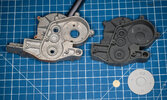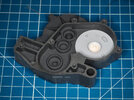Too Much Garlic
Master Member
I may have. It's been a while since I worked on it. I just copied the LFS piece in my 3D model. I may have to revisit my LFS 3D models to make them more SWS, like I did with my toe pistons - even though I didn't get those 100%, though.
And yeah, I get what you are saying about the LFS kit. It's fun to figure out the sources of the parts, when possible. I may however have to let mine go, soon, though.
And yeah, I get what you are saying about the LFS kit. It's fun to figure out the sources of the parts, when possible. I may however have to let mine go, soon, though.


